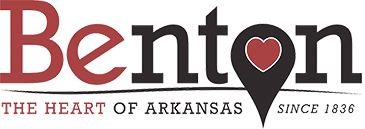Roundabouts
Roundabout Facts (according to the highway experts)
So why the trend toward roundabouts? Well, statistics back up their safety.
In 2004, the Federal Highway Administration did a study of four-way intersections and reported 2.7 million collisions, 900,000 injuries and 9,117 fatalities.
The Arkansas Highway & Transportation Department (AHTD) said roundabouts would:
- Result in 37 percent fewer accidents
- Result in 75 percent fewer injuries
- Result in 90 percent fewer fatalities
- Increase traffic flow by 50 percent
- Save cities on an average about $5,000 annually due to the lack of maintenance of traffic lights
Washington State has recently placed roundabouts at intersections. They have created detailed instructional material, including videos, regarding what roundabouts are and how to navigate through them. The information may be found at the following link:
https://www.wsdot.wa.gov/safety/roundabouts/
How to drive a roundabout
Roundabouts are designed to make intersections safer and more efficient for drivers, pedestrians and cyclists. There are two types of roundabouts: Single-lane roundabouts and multi-lane roundabouts .
There are a few key things to remember about driving roundabouts:
- Yield to drivers in the roundabout
- Stay in your lane; do not change lanes
- Do not stop in the roundabout
- Avoid driving next to oversize vehicles
Want to learn more? We have a five-part video available online.
Driving single-lane roundabouts
As you approach a roundabout, you will see a yellow "roundabout ahead" sign with an advisory speed limit for the roundabout.
Slow down as you approach the roundabout, and watch for pedestrians in the crosswalk.
Continue toward the roundabout and look to your left as you near the yield sign and dashed yield line at the entrance to the roundabout. Yield to traffic already in the roundabout.
Once you see a gap in traffic, enter the circle and proceed to your exit. If there is no traffic in the roundabout, you may enter without yielding.
Look for pedestrians and use your turn signal before you exit, and make sure to stay in your lane as you navigate the roundabout.
Driving multi-lane roundabouts
In a multi-lane roundabout, you will see two signs as you approach the intersection: The yellow "roundabout ahead" sign and a black-and-white "lane choice" sign. You will need to choose a lane prior to entering the roundabout.
You choose your lane in a multi-lane roundabout the same way you would in a traditional multi-lane intersection. To go straight or right, get in the right lane. To go straight or left, get in the left lane. Drivers can also make U-turns from the left lane.
The graphics below show what turns can be made in multi-lane roundabouts. The arrows in yellow show the movements that can be made from the right lane, and the arrows in green show the movements that can be made from the left lane.
Once you have selected your lane, watch for pedestrians in the crosswalk as you approach the roundabout.
At the dashed yield line, look to your left and yield to drivers already in the roundabout. Remember, in a multi-lane roundabout, you must yield to both lanes of traffic.
Once a gap in traffic appears, merge into the roundabout and proceed to your exit. Look for pedestrians and use your turn signal before you exit. If there is no traffic in the roundabout, you may enter without yielding.
Watch a video on how to drive a roundabout.
Trucks/oversize vehicles and roundabouts
Roundabouts are designed to accommodate vehicles of all sizes, including emergency vehicles, buses, farm equipment and semitrucks with trailers. Oversize vehicles and vehicles with trailers may straddle both lanes while driving through a roundabout.
Many roundabouts are also designed with a truck apron, a raised section of pavement around the central island that acts as an extra lane for large vehicles. The back wheels of the oversize vehicle can ride up on the truck apron so the truck can easily complete the turn, while the raised portion of concrete discourages use by smaller vehicles.
Because large vehicles may need extra room to complete their turn in a roundabout, drivers should remember never to drive next to large vehicles in a roundabout.
Learn more
Learn more about how to drive roundabouts by watching WSDOT's five-part video series on You Tube:
- Roundabouts: What they are and what they are not
- Roundabouts: How do I drive a roundabout?
- Roundabouts: Pedestrians and cyclists
- Roundabouts: Safety benefits
- Roundabouts: What does this mean for me?





